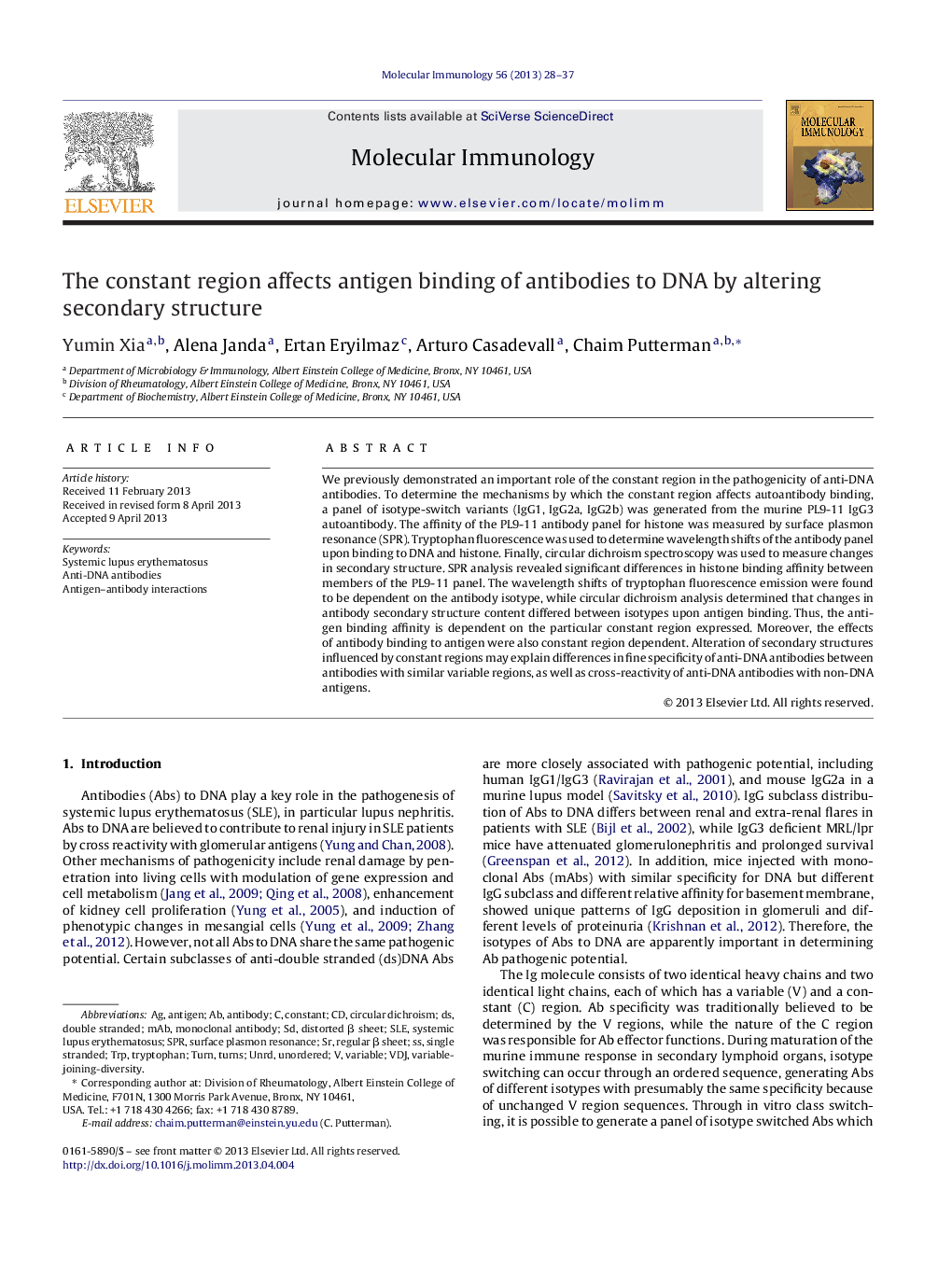| Article ID | Journal | Published Year | Pages | File Type |
|---|---|---|---|---|
| 2831093 | Molecular Immunology | 2013 | 10 Pages |
•Autoantibody isotype switch variants display significant differences in histone affinity.•Tryptophan fluorescence emission profiles were isotype dependent.•Changes in antibody secondary structure content differed between isotypes upon antigen binding.•C regions neighboring the V region confer novel properties to autoantibodies.
We previously demonstrated an important role of the constant region in the pathogenicity of anti-DNA antibodies. To determine the mechanisms by which the constant region affects autoantibody binding, a panel of isotype-switch variants (IgG1, IgG2a, IgG2b) was generated from the murine PL9-11 IgG3 autoantibody. The affinity of the PL9-11 antibody panel for histone was measured by surface plasmon resonance (SPR). Tryptophan fluorescence was used to determine wavelength shifts of the antibody panel upon binding to DNA and histone. Finally, circular dichroism spectroscopy was used to measure changes in secondary structure. SPR analysis revealed significant differences in histone binding affinity between members of the PL9-11 panel. The wavelength shifts of tryptophan fluorescence emission were found to be dependent on the antibody isotype, while circular dichroism analysis determined that changes in antibody secondary structure content differed between isotypes upon antigen binding. Thus, the antigen binding affinity is dependent on the particular constant region expressed. Moreover, the effects of antibody binding to antigen were also constant region dependent. Alteration of secondary structures influenced by constant regions may explain differences in fine specificity of anti-DNA antibodies between antibodies with similar variable regions, as well as cross-reactivity of anti-DNA antibodies with non-DNA antigens.
